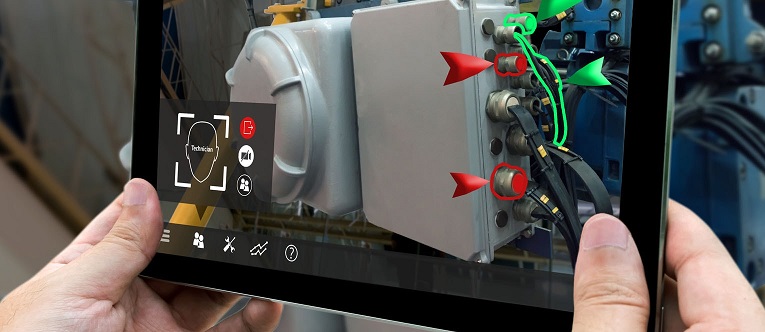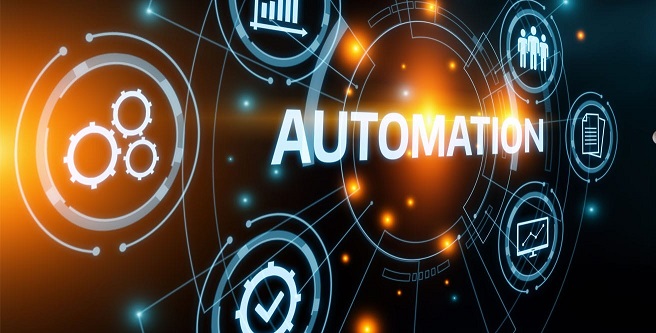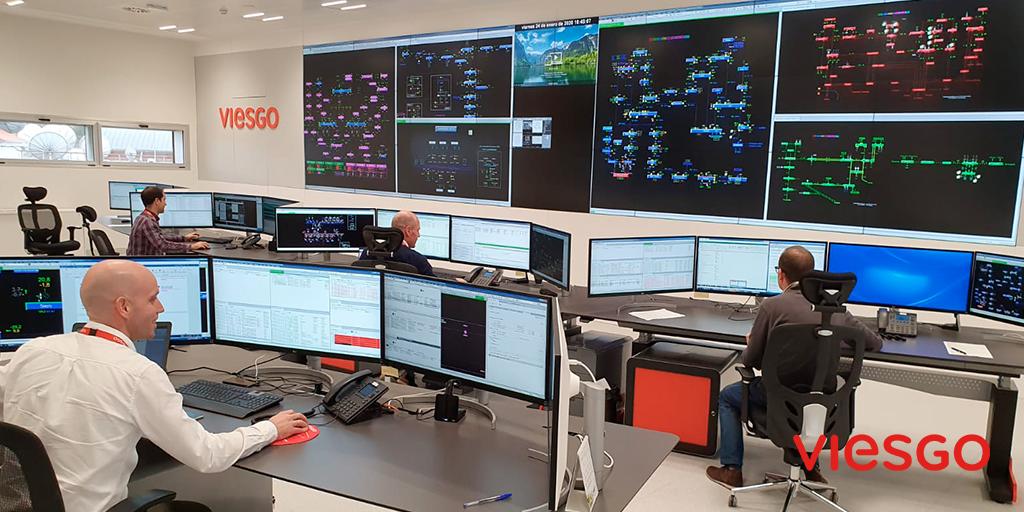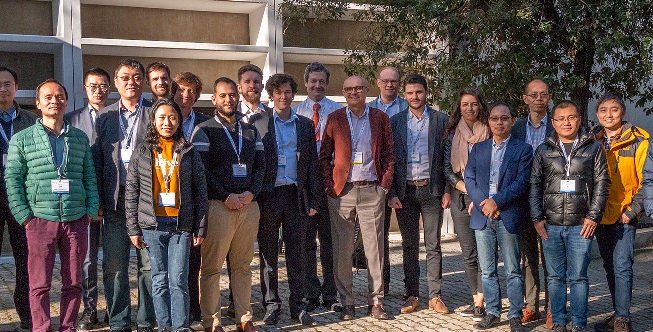EU unveils new circular economy action plan 2.0
The European Commission (EC) has adopted a new Circular Economy Action Plan - one of the main blocks of the European Green Deal, Europe’s new agenda for sustainable growth. The new Action Plan announces initiatives along the entire life cycle of products, targeting for example their design, promoting circular economy processes, fostering sustainable consumption, and aiming to ensure that the resources used are kept in the EU economy for as long as possible. It introduces legislative and non-legislative measures targeting areas where action at the EU level brings real added value.
The new Circular Economy Action presents measures to:
• Make sustainable products the norm in the EU;
• Empower consumers and public buyers;
• Focus on the sectors that use most resources and where the potential for circularity is high such as: electronics and ICT; batteries and vehicles; packaging; plastics; textiles; construction and buildings; food; water and nutrients;
• Ensure less waste;
• Make circularity work for people, regions and cities,
• Lead global efforts on circular economy.
ETSI unveils Augmented Reality framework enabling multi-vendor ecosystem for industry and consumers
The ETSI Industry Specification Group on the Augmented Reality Framework (ISG ARF) unveils ETSI GS ARF 003, a key specification towards the interoperability of AR components. Today industrial and end users tend to frequently depend on a single provider to deploy AR applications and services. Compliance with the ETSI framework will allow components from different providers to interoperate via the defined interfaces, allowing broader and quicker adoption of AR technology. It will also take account of a growing and dynamic AR market.
The ETSI GS ARF 003 introduces the characteristics of an AR system and describes the functional building blocks of a generic AR reference architecture and their mutual relationships. The global architecture gives an overview of an AR system which is based on a set of hardware and software components as well as data describing the real world and virtual content. The functional architecture applies to both fully embedded AR systems and implementations spread over IP networks in a scalable manner with subfunctions. These subfunctions can either be deployed on the AR device or be provided via cloud technology.
Europe Commission presents strategies for data and Artificial Intelligence
The European Commission unveils its ideas and actions for a digital transformation that works for all, reflecting the best of Europe: open, fair, diverse, democratic and confident. It presents a European society powered by digital solutions that put people first, opens up new opportunities for businesses, and boosts the development of trustworthy technology to foster an open and democratic society and a vibrant and sustainable economy. Digital is a key enabler to fighting climate change and achieving the green transition. The European data strategy and the policy options to ensure the human-centric development of Artificial Intelligence (AI) presented today are the first steps towards achieving these goals.
The Commission unveiled its vision for a digital transformation that works for everyone. This includes a White Paper (PDF) proposing a framework for Artificial Intelligence based on excellence and trust. One particular challenge identified by the Commission is the extremely fast development of AI. Policymakers are struggling to monitor the AI landscape and analyze its uptake and impact to know where and how their intervention could tip the balance towards desirable outcomes for society.
Standards save lives: European Standardization in support of eCall
Road traffic accidents are an unfortunate consequence of road transport. In an ever more digitalised and connected society, ITS supports road safety through automated and real-time communication between vehicles and emergency services. Known as 112-eCall, this communication is already saving lives. eCall puts the occupants of the vehicle in direct communication with the emergency services and automatically provides the location of the accident, the vehicle involved, the numbers of passengers in a vehicle at the time of impact, and other key data, which enables the prompt and most appropriate emergency response. Understanding the content of a vehicle can help the emergency services send appropriate resources and minimise risks and disruption for road users. The benefits of this technology are widely acknowledged, but they can only be ensured by proper standardization. The relevant public and private actors have been working together and the development of appropriate CEN standards has already enabled the mandatory equipping of all new models of cars and light vans. Furthermore, eCall standards specifications are now also available for every other category of vehicle, enabling these to be implemented on a voluntary basis, or on mandated use where regulators deem this appropriate in order to reduce deaths and injuries.
Co-existence with third party assistance providers is also enabled through CEN standardization. This challenging topic will truly improve the survivability of all European road users, should they unfortunately be involved in a road traffic accident/emergency. To know more about eCall standardization, you can read the leaflet CEN and CENELEC recently published at this link.
ETSI releases a technical report on Autonomic Network Management and Control applying Machine Learning and other AI Algorithms
The ETSI Technical Committee on Core Network and Interoperability Testing (TC INT) has just released a Technical Report, ETSI TR 103 626, providing a mapping of architectural components for autonomic networking, cognitive networking and self-management. This architecture will serve the self-managing Future Internet. The ETSI TR 103 626 provides a mapping of architectural components developed in the European Commission (EC) WiSHFUL and ORCA Projects, using the ETSI Generic Autonomic Networking Architecture (GANA) model. The objective is to illustrate how the ETSI GANA model specified in the ETSI specification TS 103 195-2 can be implemented when using the components developed in these two projects. The Report also shows how the WiSHFUL architecture augmented with virtualization and hardware acceleration techniques can implement the GANA model. This will guide implementers of autonomics components for autonomic networks in their optimization of their GANA implementations.
The TR addresses autonomic decision-making and associated control-loops in wireless network architectures and their associated management and control architectures. The mapping of the architecture also illustrates how to implement self-management functionality in the GANA model for wireless networks, taking into consideration another Report ETSI TR 103 495, where GANA cognitive algorithms for autonomics, such as machine learning and other AI algorithms, can be applied.
The Agreement aims at facilitating the collaboration between CEN and CENELEC, two of the officially recognised European Standardization Organizations, and E.DSO, the interface between Europe’s Distribution System Operators (DSOs) and the European institutions. The objective is to ensure an appropriate exchange of knowledge as well as high quality and consensus-based support in the delivery of standards for the large-scale development of smart grid technologies.
The new Partnership Agreement is a step forward in this direction: through the Agreement, E.DSO will provide CEN and CENELEC with their technical and strategic expertise in the field of smart grids and energy distribution and bring a welcome industrial perspective to the work of standardization. Furthermore, the exchanges between the three organizations will bring lasting benefits to other related areas of ongoing work, such as ICT, cybersecurity, digitalization of the energy sector and e-Vehicles.
The European Commission endorsed the joint toolbox of mitigating measures agreed by EU Member States to address security risks related to the rollout of 5G, the fifth-generation of mobile networks. This follows the European Council's call for a concerted approach to the security of 5G and the ensuing Commission Recommendation of March 2019. Member States have since identified risks and vulnerabilities at national level and published a joint EU risk assessment. Through the toolbox, the Member States are committing to move forward in a joint manner based on an objective assessment of identified risks and proportionate mitigating measures. With its Communication adopted, the Commission is launching relevant actions within its competence and is calling for key measures to be put in place by 30 April 2020.
ETSI announced the launch of a new group dedicated to specifying the fifth generation of Fixed Network (ETSI ISG F5G). In a launch via an online press and industry briefing yesterday, various speakers expressed their view on the need for standardization in this area. We are entering an exciting new era of communications, and fixed networks play an essential role in that evolution alongside and in cooperation with mobile networks. Building on previous generations of fixed networks, the 5th generation will address three main use cases, a full-fiber connection, enhanced fixed broadband and a guaranteed reliable experience.
For home scenarios, emerging services such as Cloud VR (virtual reality) and AR (augmented reality) video streaming or online gaming introduce the necessity for ultra-broadband, extremely low latency and zero packet loss. Business scenarios such as enterprise Cloudification, leased line, or POL (Passive Optical LAN) require high reliability and high security. Other industry sectors have specific requirements on the deployment of fiber infrastructures including environmental conditions such as humidity, temperature or electromagnetic interference.
In a world where mobility is a cornerstone of global trade, work, tourism and leisure activities, providing efficient and safe transport infrastructure is a challenge. Connecting efficiently dense and complex cities or remotes regions requires a constant capacity of integrating new technologies. At the side of traditional game players, new actors of mobility emerge, sometimes with disruptive impact. CEN and CENELEC are engaged in facilitating the harmonized deployment of both traditional and innovative transport technologies, by improving compatibility, connectivity and sustainability.
In this context, CEN and CENELEC are proud to announce the launch of a new Joint Technical Committee, CEN/CLC/JTC 20, dedicated to hyperloop systems standardization. Hyperloop is a ground-based high-speed transportation system for passengers, living and/or non-living stock, in which vehicles are suspended through contactless means and travel inside a sealed, confined reduced pressure environment. With potential benefits on safety, time-saving, greenhouses gases emissions reduction, and economic value, this technology begins progressively to be on the spotlight.
As several European and International industries are investing in hyperloop systems with the interest of both private and public actors, European standardization is crucial to achieve a coherent roll-out of this new tool of mobility. Thanks to their extensive experience in transport standardization, CEN and CENELEC have recently been devoted to play a major role in the development of future hyperloop standards.
The EMPOWER project launches a consultation to create and update the advanced wireless 5G technology roadmap based on the analysis of trends for Beyond 5G in the respective research, standards, and spectrum communities.
The H2020 EMPOWER project is chartered with technology road mapping on 5G evolution in the timeframe 2020-2030. The technology road mapping is targeted at supporting the wireless research community in Europe, the USA, and globally, with trends and insights pertinent to their research on 5G evolution in the short, medium and long terms. The technology roadmap is also meant to identify the demand regarding the focus of the future advanced test platforms as explored in EMPOWER.
In this context, the EMPOWER project solicits your participation in the first consultation on the initial technology road mapping activities released by the project. The aim of this consultation is to collect and analyse all inputs and feedback received from the wireless research community in order to enrich the initial roadmap. The results of the forthcoming up-dates and up-grades will be integrated in the Roadmap Version 2.0 that will be circulated in due course to the wireless research community and presented in a future workshop.















